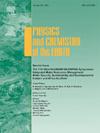Analysis of driving factors and suitability assessment for raft aquaculture in the Northern China seas using remote sensing data
IF 3
3区 地球科学
Q2 GEOSCIENCES, MULTIDISCIPLINARY
引用次数: 0
Abstract
Remote sensing technology and its derived products have enabled large-scale suitability assessments for marine aquaculture, critically important for ensuring the safety of marine aquaculture products and the sustainable development of the marine aquaculture industry in China. In this study, multi-source remote sensing data and Geographical Detector analysis were employed to quantitatively evaluate the driving factors of raft aquaculture in the northern maritime regions of China. Additionally, an evaluation indicator system for raft aquaculture suitability was developed, and the suitability of raft aquaculture in 2022 was evaluated. Furthermore, the suitability of raft aquaculture under three development strategies was discussed. The results are as follows: (1) Socio-infrastructure factors rather than marine environment factors are the predominant drivers shaping the spatial pattern of raft aquaculture in the study area. (2) In 2022, 66.83% of the raft aquaculture areas were located in regions deemed suitable for farming, 29.73% were in moderately suitable areas, and only 3.44% were in areas unsuitable for aquaculture. (3) When further considering the marine environment factors, the sea area suitable for raft aquaculture does not significantly decrease, indicating that there is a certain degree of planning adjustment space in the layout of raft aquaculture within the study area. This research provides insights to inform the healthy and sustainable development of the marine farming industry in the northern waters of China.
求助全文
约1分钟内获得全文
求助全文
来源期刊

Physics and Chemistry of the Earth
地学-地球科学综合
CiteScore
5.40
自引率
2.70%
发文量
176
审稿时长
31.6 weeks
期刊介绍:
Physics and Chemistry of the Earth is an international interdisciplinary journal for the rapid publication of collections of refereed communications in separate thematic issues, either stemming from scientific meetings, or, especially compiled for the occasion. There is no restriction on the length of articles published in the journal. Physics and Chemistry of the Earth incorporates the separate Parts A, B and C which existed until the end of 2001.
Please note: the Editors are unable to consider submissions that are not invited or linked to a thematic issue. Please do not submit unsolicited papers.
The journal covers the following subject areas:
-Solid Earth and Geodesy:
(geology, geochemistry, tectonophysics, seismology, volcanology, palaeomagnetism and rock magnetism, electromagnetism and potential fields, marine and environmental geosciences as well as geodesy).
-Hydrology, Oceans and Atmosphere:
(hydrology and water resources research, engineering and management, oceanography and oceanic chemistry, shelf, sea, lake and river sciences, meteorology and atmospheric sciences incl. chemistry as well as climatology and glaciology).
-Solar-Terrestrial and Planetary Science:
(solar, heliospheric and solar-planetary sciences, geology, geophysics and atmospheric sciences of planets, satellites and small bodies as well as cosmochemistry and exobiology).
 求助内容:
求助内容: 应助结果提醒方式:
应助结果提醒方式:


